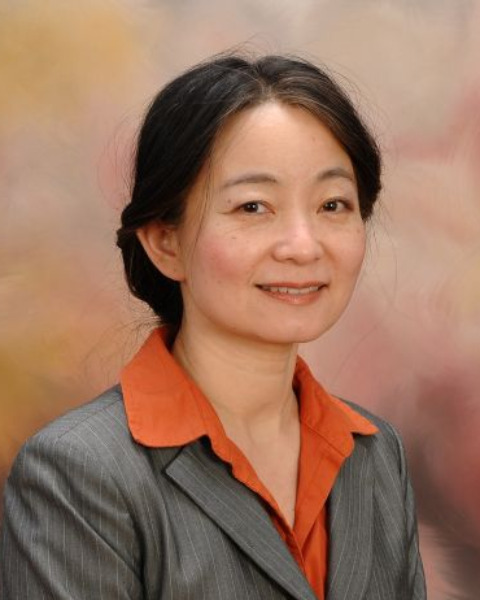Cellular and Molecular Bioengineering
(H-313) Effects of low-energy x-rays and UV radiation on fibroblast cells
- MG
Michelle L. Gorodisky (she/her/hers)
Undergraduate Student
Nova Southeastern University
Davie, Florida, United States 
Congyue Peng, PhD
Research Assistant Professor
Clemson University, United States- AC
Arianna Csiszer
Graduate Student
Clemson University, United States - DD
Delphine Dean, PhD (she/her/hers)
Professor and Chair
Department of Bioengineering, Clemson University, United States
Presenting Author(s)
Co-Author(s)
Last Author(s)
Materials and Methods:: 3T3 fibroblast cells were plated on a Chemplex 6 μm thick Mylar® film. The Mylar® film does not significantly attenuate the low energy x-rays used in this study. One group of cells were then irradiated at a total dose of 0.2 mGy with a dose rate of 0.0424 mGy/min for 283 seconds, and another group of cells were irradiated at a total dose of 0.2 mGy with a dose rate of 0.0258 mGy/min for 466 seconds. The fibroblast cells were also plated on 6-well plates and exposed to UV light from above at 254 nm for 15 minute and 60 minute intervals. Immunofluorescence imaging, DNA damage assays, and proliferation assays were performed
Results, Conclusions, and Discussions::
After 2 days in culture post irradiation, there were no significant differences in cell morphology and cell density with UV or x-rays (Figures 1 and 2). However, differences were observed in the UV irradiation group cultures. The UV radiation seemed to affect the cell metabolism. These were even noticeable by visual inspection of the cell media. There is a visual difference between the wells proximal to the UV light source compared to the wells placed a few centimeters further from the UV. The wells further away from the UV were visibly paler in color. The cells closer maintained a darker color in the media, possibly indicating that those cells are less active at metabolizing nutrients from the media. In addition, cells exposed to UV showed significantly (p< 0.01) less proliferation than controls (Figure 3). Surprisingly, x-ray irradiated fibroblasts showed increased proliferation compared to controls (Figure 4).
One limitation of our current study is that the fibroblasts were extremely confluent (Figures 1 and 2), which may have caused a lack of adherence to the Mylar® film and 6-well plates. This limited the duration of our study to just 2 days after irradiation. In addition, the high cell density may have provided some radioprotective effects as cells in confluent monolayers decrease their proliferation rate and thus, have more time to repair damage from radiation sources. We are continuing this study with lower cell densities and longer culture times.
Acknowledgements (Optional): : This research was supported by NSF and Clemson University, Clemson, SC. “Nature’s machinery through the prism of physics, biology, chemistry and engineering” (NSF Award # 1757658)
References (Optional): :
Grudzenski, S., Raths, A., Conrad, S., Rübe, C.E., & Löbrich, M. (2010). Inducible response required for repair of low-dose radiation damage in human fibroblasts. PNAS, 107(32), 14205-14210. https://doi.org/10.1073/pnas.1002213107
Rognoni, E., Goss, G., Hiratsuka, T., Sipilä, K.H., Kirk, T., Kober, K.I., Lui, P.P., Tsang, V.S., Hawkshaw, N.J., Pilkington, S.M., Cho, I., Ali, N., Rhodes, L.E., & Watt, F.M. (2021). Role of distinct fibroblast lineages and immune cells in dermal repair following UV radiation-induced tissue damage. eLife, 10, e71052. https://doi.org/10.7554/eLife.71052
